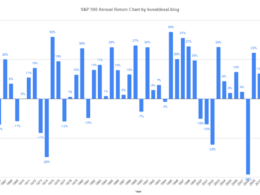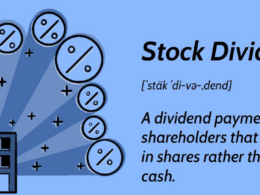Table of Contents
Economic indicators are some of the most valuable tools investors can place in their arsenals. Consistent in their release and wide scope and range, metrics such as the Consumer Price Index (CPI) and written reports like the Beige Book are free for all investors to inspect and analyze. Policymakers, most notably those at the Federal Reserve, use indicators to determine where the economy is going and how fast it’s getting there.
Although investors should get to know economic indicators, the reports are admittedly often dry, and the data is raw. In other words, information needs to be contextual before it can help make decisions regarding investments and asset allocation. However, there is valuable information in those raw data releases. The various government and nonprofit groups conducting the surveys and releasing the reports do a very good job of collating and cohesively presenting what would be logistically impossible for investors to do alone. Most indicators provide nationwide coverage, and many have detailed industry breakdowns that can be useful to individual investors.
What Is an Economic Indicator?
In its simplest form, an indicator could be considered any information that can help an investor decipher what is happening in the economy. The U.S. economy is essentially a living thing where, at any given moment, there are billions of moving parts—some acting, others reacting. This simple truth makes predictions extremely difficult. They must always involve many assumptions, no matter what resources are put to the task. However, with the help of a wide range of economic indicators, investors can gain a better understanding of various economic conditions. There are also indexes for coincident and lagging indicators—each component is based on whether they tend to rise during or after an economic expansion.
Use in Tandem, Use in Context
Once an investor understands how various indicators are calculated and their relative strengths and limitations, several reports can be used to make more thorough decision-making. For example, consider using data from several employment releases. By using the hours-worked data (from the Employment Cost Index) along with the labor report and nonfarm payrolls, investors can get a complete picture of the state of the labor market.
Additionally, are increasing retail sales figures being validated by increased personal expenditures? Are new factory orders leading to higher factory shipments and durable goods figures? Are higher wages showing up in higher personal income figures? The savvy investor will look up and down the supply chain to find validation of trends before acting on the results of any one indicator release.
Personalizing Your Research
Some prefer to understand specific indicators well and use this expert knowledge to make investment plays based on their analyses. Others may adopt a jack-of-all-trades approach, understanding the basics of all the indicators without relying on anyone too much. For example, a retired couple living on a combination of pensions and long-term Treasury bonds should be looking for different things than a stock trader who rides the waves of the business cycle. Most investors fall in the middle, hoping for stock market returns to be steady and near long-term historical averages (about 8% to 10% per year).
Knowing the expectations for any individual release and the macroeconomic forecasts is helpful. Forecast numbers can be found on several public websites, such as Yahoo! Finance or MarketWatch. Press releases from newswires such as the Associated Press and Reuters will present figures with highlighted key pieces when a specific indicator release is made.
It is helpful to read a report on one of the newswires, which may parse the indicator data through the filters of analyst expectations, seasonality figures, and year-over-year results. For those who use investment advisors, these individuals will analyze recently released indicators in an upcoming newsletter or discuss them during upcoming meetings.
Inflation Indicators: Keeping a Watchful Eye
Many investors, especially those who invest primarily in fixed-income securities, are concerned about inflation. Current inflation, its strength, and what it could be in the future are vital in determining prevailing interest rates and investing strategies. Several indicators focus on inflationary pressure. The most notable in this group are the Producer Price Index (PPI) and the Consumer Price Index (CPI). Many investors will use the PPI to try to predict the upcoming CPI.
There is a proven statistical relationship between the two, as economic theory suggests that if goods producers are forced to pay more for production, some portion of the price increase will be passed on to consumers. Each index is derived independently, but both are released by the Bureau of Labor Statistics (BLS). Other key inflationary indicators include the levels and growth rates of the money supply and the Employment Cost Index (ECI).
Economic Output: Stock Investors Inquire Within
Gross domestic product (GDP) may be the most important indicator, especially for equity investors focused on corporate profit growth. Since the GDP represents the sum of our economy’s production, its growth rate is targeted at certain ranges. If the numbers fall outside those ranges, fear of inflation or recession will grow in the markets. To avoid this fear, many people will follow the monthly indicators that can shed some light on the quarterly GDP report.
For example, capital goods shipments from the Factory Orders Report are used to calculate producers’ durable equipment orders within the GDP report.8 Indicators such as retail sales and current account balances are also used in the computations of GDP, so their release helps to complete part of the economic puzzle before the quarterly GDP release.
Other indicators that aren’t part of the actual calculations for GDP are still valuable for their predictive abilities. Metrics such as wholesale inventories, the Beige Book, the Purchasing Managers’ Index (PMI), and the labor report all show how well our economy is functioning. With the assistance of all these monthly data, GDP estimates will tighten as the component data slowly gets released throughout the quarter. When the GDP report is released, there will be a consensus on the remarkably accurate figure. If the actual results deviate much from the estimates, the markets will move, often with high volatility. If the number falls right into the middle of the expected range, then the markets and investors can collectively pat themselves on the back and let prevailing investing trends continue.
Mark Your Calendar
Sometimes, indicators take on a more valuable role because they contain very timely data. For instance, the Institute for Supply Management’s PMI report is typically released on the first business day of every month. As such, it is one of the first pieces of aggregate data available for the month that just ended. While not as rich in detail as many indicators to follow, the category breakdowns are often picked apart for clues such as future labor report details (from the employment survey results) or wholesale inventories (inventory survey).
The relative order in which the indicators are presented does not change month to month, so investors may want to mark a few days on their monthly calendars to read up on the areas of the economy that might change how they think about their investments or time horizon. Overall, asset allocation decisions can fluctuate over time, and making such changes after a monthly review of macro indicators may be wise.
The Bottom Line
Benchmark pieces of economic indicator data arrive with no agenda or sales pitch. The data is just that, which is hard to find nowadays. By becoming knowledgeable about the whats and whys of the major economic indicators, investors can better understand the stock market and the economy in which their dollars are invested and be better prepared to revisit an investment thesis when the timing is right. While no “magic indicator” can dictate whether to buy or sell, using economic indicator data in conjunction with standard asset and securities analysis can lead to smarter portfolio management for both the professional asset manager and the do-it-yourself investor.
Trade on the Go. Anywhere, Anytime
One of the world’s largest crypto-asset exchanges is ready for you. Enjoy competitive fees and dedicated customer support while trading securely. You’ll also have access to Binance tools that make it easier to view your trade history, manage auto-investments, view price charts, and make conversions with zero fees. Make an account for free and join millions of traders and investors on the global crypto market.










